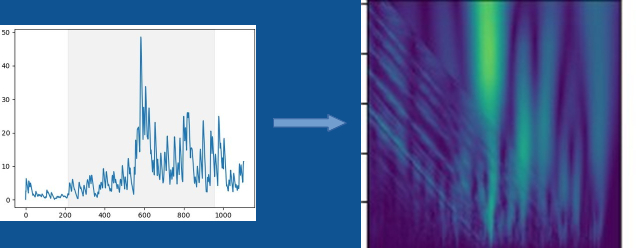TITLE : High-Resolution Generation of Multi-Sensor Signals
Keywords: deep learning, multimodal imaging, generative models, non-destructive testing, multi- sensor signals
Partner Laboratory: IBISC (University of Évry – Paris-Saclay) Duration: 6 months
Period: from February 2026 onwards (flexible depending on candidate profile)
Scientific and Industrial Context
Non-destructive testing (NDT) encompasses a range of techniques for assessing the integrity of industrial components without compromising their structural integrity. Among these methods, ultrasonic imaging plays a pivotal role: acoustic waves are transmitted through the material, and the reflected signals (echoes) are analyzed to detect and characterize potential internal defects (cracks, inclusions, delaminations, etc.). These signals are subsequently transformed into 2D/3D images, enabling detailed inspection of components.
However, a major bottleneck persists: the scarcity of real-world data, particularly for critical or rare defects. This class imbalance severely constrains the performance of supervised learning models, which require substantial quantities of representative and diverse data.
To address this limitation, the scientific community is increasingly exploring the generation of realistic synthetic data using deep generative models (GANs, VAEs, diffusion models, etc.). In the NDT domain, this approach remains largely unexplored, particularly for the conditional generation of multi-sensor signals (ultrasound, eddy currents, thermography, etc.), where inter-modal correlations are complex.
Internship Objectives
The overarching goal of this internship is to develop a generative model capable of producing realistic high- resolution multi-sensor signals, thereby artificially augmenting the training dataset and improving the performance of defect detection models.
More specifically, the work will comprise several components:
1. State-of-the-Art Review
-
- Survey of existing data generation approaches for NDT and multi-sensor signals
- Analysis of modern generative methods (GANs, VAEs, diffusion models, conditional generative models, etc.)
- Exploration of evaluation strategies for assessing the realism of synthetic data (FID, Inception Score, perceptual metrics, physical measurements, etc.)
2. Design and Enhancement of a Generative Model
-
- Implementation or adaptation of a conditional generation model to produce signals from physical or contextual parameters (defect type, material, geometry, frequency, etc.)
- Investigation of upscaling to high resolution and inter-sensor consistency (coherence across multiple types of simulated measurements)
- Comparison of different architectures (GAN, Diffusion Model, ) and conditioning strategies
3. Experimental Evaluation and Validation
-
- Definition of quantitative and qualitative metrics to assess the realism and relevance of generated signals
- Evaluation of the impact of synthetic data on the performance of detection or classification models
Proposed Methodology
The approach will leverage state-of-the-art generative models, particularly diffusion models, which have recently emerged as the reference standard for generating complex signals and images.
A preprocessing phase for real data (filtering, normalization, temporal/spatial segmentation) will be necessary prior to training. Controlled experiments will be conducted to compare synthetic signals with real data on internal or public datasets, in collaboration with laboratory partners.
Candidate Profile
Educational Background: Master’s 2 student or final-year engineering school student, specializing in artificial intelligence, signal processing, computer vision, or industrial computing.
Required Technical Skills:
- Strong foundation in machine learning and deep learning
- Proficiency in Python programming
- Practical experience with PyTorch or TensorFlow frameworks
- Knowledge of signal processing or scientific imaging
- Technical English (reading and writing scientific papers)
Personal Qualities:
- Scientific curiosity and autonomy
- Analytical and synthesis capabilities
- Proactive mindset and enthusiasm for experimental research
Work Environment
The internship will take place at the IBISC laboratory (University of Évry, Paris-Saclay University), within the team working on artificial intelligence applied to signal and image processing. The environment is multidisciplinary, at the intersection of machine learning, sensor physics, and the processing of complex data from industrial environments.
Contact
- Date de l’appel : 11/11/2025
- Statut de l’appel : Non pourvu
- Contacts : Vincent VIGNERON (PR Univ. Évry, IBISC équipe SIAM), Thomas SENDRA (doctorant, IBISC équipe SIAM), vincentDOTvigneronATuniv-evryDOTfr, thomasDOTsendraATuniv-evryDOTfr
- Sujet de stage niveau Master 2 (format PDF)
- Web équipe SIAM





